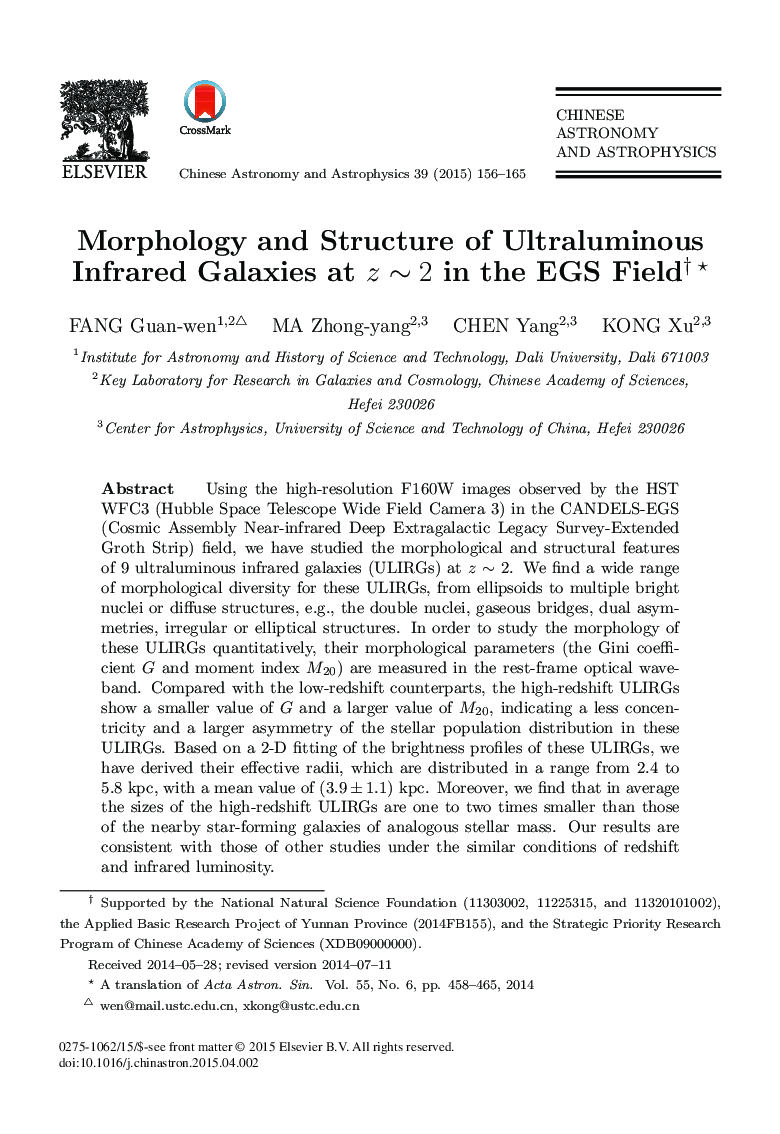| Article ID | Journal | Published Year | Pages | File Type |
|---|---|---|---|---|
| 1771788 | Chinese Astronomy and Astrophysics | 2015 | 10 Pages |
Using the high-resolution F160W images observed by the HST WFC3 (Hubble Space Telescope Wide Field Camera 3) in the CANDELS-EGS (Cosmic Assembly Near-infrared Deep Extragalactic Legacy Survey-Extended Groth Strip) field, we have studied the morphological and structural features of 9 ultraluminous infrared galaxies (ULIRGs) at z ∼ 2. We find a wide range of morphological diversity for these ULIRGs, from ellipsoids to multiple bright nuclei or diffuse structures, e.g., the double nuclei, gaseous bridges, dual asym- metries, irregular or elliptical structures. In order to study the morphology of these ULIRGs quantitatively, their morphological parameters (the Gini coeffcient G and moment index M20) are measured in the rest-frame optical wave- band. Compared with the low-redshift counterparts, the high-redshift ULIRGs show a smaller value of G and a larger value of M20, indicating a less concen- tricity and a larger asymmetry of the stellar population distribution in these ULIRGs. Based on a 2-D fitting of the brightness profiles of these ULIRGs, we have derived their effective radii, which are distributed in a range from 2.4 to kpc, with a mean value of (3.9 ± 1.1) kpc. Moreover, we find that in average the sizes of the high-redshift ULIRGs are one to two times smaller than those of the nearby star-forming galaxies of analogous stellar mass. Our results are consistent with those of other studies under the similar conditions of redshift and infrared luminosity.
